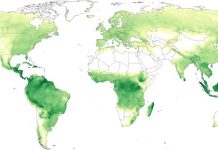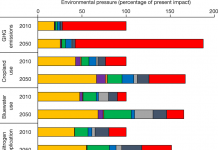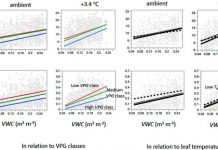《中国科学院“十三五”发展规划纲要》在京发布
8月31日下午,中国科学院在北京召开新闻发布会,正式发布《中国科学院“十三五”发展规划纲要》(以下简称《规划纲要》)。中科院院长、党组书记 白春礼出席发布会,并介绍了编制“十三五”规划的总体考虑和主要目标;副院长、党组成员李静海介绍了《规划纲要》的编制过程和主要内容;副院长、党组成员 谭铁牛主持发布会。
根据《规划纲要》,中科院针对社会经济的要素、可持续发展和国家安全,选取了基础前沿交叉、先进材料、能源、生命与健康、海洋、资源生态环境、信息、光电空间八大创新领域,以及两类公共支撑平台统筹重点科技布局。
根据上述“8+2”领域,中科院凝练提出了60项有望实现跨越发展的重大突破和80项塑造未来发展新优势的重点培育方向,力争在一些战略必争领域抢占国 际制高点,在若干新兴前沿交叉领域成为领跑者和开拓者,产出一批重大原创成果、重大战略性技术与产品、重大示范转化工程,提供更多有效和中高端科技供给, 提升国家创新能力和相关产业国际竞争力。(来源:中国科学院)
相关链接:中国科学院“十三五”发展规划纲要
【富营养化改变淡水生态系统氮磷计量特征】Yan ZB et al. Phosphorus accumulates faster than nitrogen globally in freshwater ecosystems under anthropogenic impacts. Ecology Letters 2016 19(10): 1237-1246
Abstract
Combined effects of cumulative nutrient inputs and biogeochemical processes that occur in freshwater under anthropogenic eutrophication could lead to myriad shifts in nitrogen (N):phosphorus (P) stoichiometry in global freshwater ecosystems but this is not yet well-assessed. Here we evaluated the characteristics of N and P stoichiometries in bodies of freshwater and their herbaceous macrophytes across human-impact levels regions and periods. Freshwater and its macrophytes had higher N and P concentrations and lower N : P ratios in heavily than lightly human-impacted environments further evidenced by spatiotemporal comparisons across eutrophication gradients. N and P concentrations in freshwater ecosystems were positively correlated and N : P was negatively correlated with population density in China. These results indicate a faster accumulation of P than N in human-impacted freshwater ecosystems which could have large effects on the trophic webs and biogeochemical cycles of estuaries and coastal areas by freshwater loadings and reinforce the importance of rehabilitating these ecosystems.
【氮富集的驱动机制】Emily C. Farrer et al. Teasing apart plant community responses to N enrichment: the roles of resource limitation competition and soil microbes. Ecology Letters 2016 19(10): 1287-1296
Abstract
Although ecologists have documented the effects of nitrogen enrichment on productivity diversity and species composition we know little about the relative importance of the mechanisms driving these effects. We propose that distinct aspects of environmental change associated with N enrichment (resource limitation asymmetric competition and interactions with soil microbes) drive different aspects of plant response. We test this in greenhouse mesocosms experimentally manipulating each factor across three ecosystems: tallgrass prairie alpine tundra and desert grassland. We found that resource limitation controlled productivity responses to N enrichment in all systems. Asymmetric competition was responsible for diversity declines in two systems. Plant community composition was impacted by both asymmetric competition and altered soil mic







